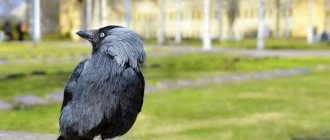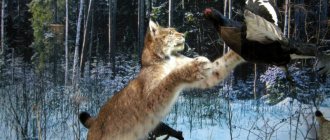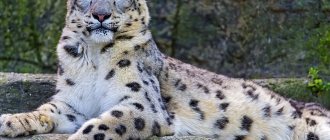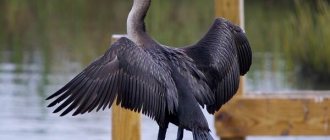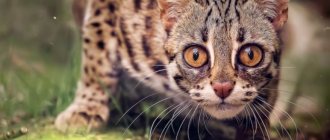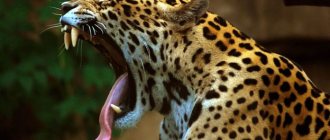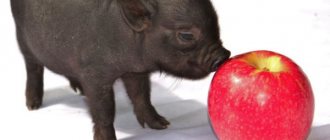Author: sdv
December 16, 2021 11:44
Community: Animals
Tags: animals interesting interesting facts useful birds toucan toucans facts
8254
15
1
When we are asked, “What is your favorite bird?”, we often think of majestic eagles, hawks, or wise owls. But why does everyone forget about toucans? What do we even know about these birds? These are feathered inhabitants of tropical forests with a distinctive feature - a huge beak. But if you delve a little into the facts, you can learn a lot of interesting oddities about toucans. These birds look like they are from another planet!
0
See all photos in the gallery
Toucan conservation
Photo: Toucan from the Red Book
After decades of rampant toucan exports, South American countries have banned international trade in wild-caught birds. Governments have taken a number of measures to preserve the population and environment for toucans. These actions, combined with a hunting ban, helped restore the bird population.
Investments in the development of tourism and the maintenance of original territories for the life and breeding of toucans in their original form have alleviated the situation of some species close to extinction. However, bans on hunting, catching and selling wild birds in some countries of South America have shifted trade in live goods abroad, to the territory of other states. In addition to measures to restore the habitat of rare birds, farms for breeding unique species are being created. In conditions close to natural, toucans reproduce well. The offspring obtained in captivity are released into the territory of the habitat.
Zoo defenders are taking a number of measures to save birds kept in captivity, sick and maimed. In Brazil, there is a known case in which a crippled female toucan managed to have her beak restored. The prosthesis was made on a 3D printer from durable antibacterial material. People have restored the bird's ability to feed and care for its chicks on its own.
The toucan is one of the most prominent representatives of the bird world. It is distinguished not only by its bright plumage and unusual appearance, but also by its high level of organization when living in the wild. In captivity, the toucan is easily tamed due to its natural curiosity, gullibility and high intelligence. Unfortunately, people living in the habitats of toucans exterminate them because of their bright plumage and tasty meat. As a result, many toucan species are classified as vulnerable species and may disappear from the face of the earth.
What does a toucan eat?
Photo: Toucan
The birds tend to forage alone or in pairs, eating mostly fruit. The long, sharp beak is not suitable for biting off prey. Toucans throw food up and swallow it whole.
Among the especially popular delicacies are medium-sized bananas, bright prickly pear, yellow carambola, and guanala berries. Toucans prefer rambatum, rufous mamay, guava and petahaya. It has been noted more than once that birds prefer brightly colored berries and fruits. There is a theory that such food is clearly visible and easy to find.
Guava trees provide toucans with fruits with a variety of tastes and smells: strawberries, apples and pears. Birds love the rich, buttery fruit of avocado. The diet includes Barbados cherry, ackee, jabotica, kokan fruit, lakuma, lulu and mammea americana. The birds' diet includes mangosteen, noni, pipino, chirimoya, guanobana and pepino.
Toucans are not averse to eating insects. Sitting on old trees, they catch spiders, midges, and caterpillars rich in protein. It feeds on Argentine ants, bark beetles, sugar beetles and butterflies. The menu includes cotton boll weevil, ecitones, grain carpet beetle and bog beetles.
The diet of toucans includes small reptiles. Lizards, amphisbaenas, high-legged frogs, tree frogs, tegus and slender snakes. Toucans love to feast on the eggs of other birds. This happens especially often during the period of fattening their own chicks. Toucans eat tree seeds and flowers. This feature of the diet allows the seeds of rare wild plants to be distributed to new territories. This is how toucans enrich the flora of their range.
Because of the serrations along the entire length of their beak, toucans were considered birds of prey. The naturalists who first described birds considered the formations on the beak to be strong, powerful teeth. Toucans were believed to catch prey and tear it apart. In fact, toucans don't even have fish in their diet. Birds eat fruits. And the long beak and serrations do not make eating easier, but rather complicate it. Birds have to go to the fruit twice because they are simply not able to swallow the food whole.
Natural enemies of toucans
Photo: Bird Toucan
Natural enemies of toucans, like the birds themselves, live in trees. Toucans are hunted by many predators in the South American jungle, including humans, large birds of prey and wild cats.
Weasels, snakes and rats, and wild cats prey on toucan eggs more than on the toucan itself. Sometimes toucans or their clutches become prey for coatis, harpies and anacondas. The toucan remains a highly hunted species in parts of Central America and some areas of the Amazon. Tasty, tender meat is a rare delicacy. Beautiful feathers and beak are used to make souvenirs and accessories.
Nests are destroyed by livestock traders. Live toucans are in high demand. The bird sells well as a pet. The biggest threat to toucans today is habitat loss. Tropical forests are being cut down to make way for farmland and industrial development.
In Peru, coca growers have practically driven the yellow-browed toucan out of its permanent habitat. Due to drug trafficking, this species of toucan is endangered due to the loss of its permanent habitat.
Social structure and reproduction
Photo: Toucan Red Book
Toucans are social. They live in stable pairs for many years. They form family groups of up to 20 individuals or more. Groups are formed during the mating season, and then break up into families to lay and incubate eggs, and to feed and train the offspring. Groups also form during migrations or during the harvest season, when large fruit-bearing trees can support several families.
Birds live in nature for 20 years or more. With proper and good care in captivity, they live up to 50. Female toucans lay an average of 4 eggs at a time. The minimum clutch is 2 eggs, the maximum known is 6. Birds nest in tree cavities. Choose comfortable and deep recesses for this.
Toucans are monogamous and breed only once a year in the spring. During courtship, the male collects fruits and brings food to his partner. After a successful courtship ritual, the bird enters into mating. Toucans incubate their eggs for 16-20 days by both the father and mother. The parents alternately incubate the eggs while in the hollow. The free partner is busy guarding and collecting food. After the chicks hatch, both parents continue to care for the babies.
The chicks hatch completely naked, with clear skin and closed eyes. Completely helpless until 6-8 weeks of age. After this period, plumage begins. Juvenile toucans have dull plumage and a smaller beak that enlarges as the chick grows. The age of sexual and reproductive maturity in both females and males occurs at 3-4 years.
Some religions in Latin America prohibit parents of a newborn child from eating toucan meat. It is believed that consumption of poultry meat by parents of a newborn can lead to the death of the child. The toucan is the sacred animal of many South American tribes. His image can be seen on totem poles as the embodiment of flight to the spiritual world.
Features of character and lifestyle
Photo: Toucan South America
Toucans are highly organized birds. They create pairs or live in small groups, often with relatives. Together they raise chicks, protect them from attack, feed and train their offspring.
They love to communicate. For communications they use sharp, both high and low, but at the same time quite pleasant sounds. When attacked by a predator, they are able to unite and raise an unbearable hubbub. The alarm raised by the toucans causes a commotion among other inhabitants of the area. The sounds are heard throughout the entire area and warn other inhabitants of the territory about the attack. As a rule, predators exposed to a sound attack retreat. This saves the lives of not only toucans, but also other inhabitants of the forest.
Toucans love to play, joke and misbehave. You can watch birds play out comic battles for possession of a branch. They, like dogs, can steal the piece of wood they like from each other. In fact, this is how birds show their interest and desire to communicate.
Toucans are sociable birds. They easily make contact with people. Curious, trusting, friendly. These qualities are good for taming. People noticed these features and took advantage of them. There are entire nurseries that reproduce toucans for sale.
Population and species status
Photo: Toucan beak
Scientists have still not been able to accurately calculate the number of toucans. They are known to live on an area of 9.6 million square meters. km. Of the approximately fifty species of toucans known to science, the vast majority are classified as least at risk to the population (LC in the accepted international classification). However, this should not be misleading. Toucan numbers have been steadily declining, and LC status simply means that the decline has not reached 30 percent in 10 years or three generations.
At the same time, some species of toucans are in real danger due to deforestation for agricultural land and coca plantations. Thus, two species of Andigen toucans - the blue Andigen and the flat-billed Andigen - are in a threatened position (NT status). The rainforests of the Andes mountain range are being cut down by local people and large corporations, as a result of which toucans are deprived of their homes and are doomed to death.
The Mexican yellow-throated toucan and golden-breasted toucan have the same status. Scientists do not rule out the extinction of these species in the near future and believe that they require constant monitoring and protective measures. The yellow-throated toucan's fellow white-breasted toucan is in slightly less danger - its status in the international classification is designated as "vulnerable" (VU). As a rule, this category includes animals whose numbers are not yet declining too much, but their habitat areas are being actively destroyed by humans.
Three species of toucan are at greatest risk: the yellow-browed toucanette, the collared toucan and the ariel toucan. All of them have EN status - “in danger”. These birds are on the verge of extinction and their preservation in the wild is already in question.
Habitat
Toucans are found throughout South and Central America.
The bird likes to nest in groves and on light forest edges.
The bird especially likes to settle in close proximity to human habitation, sitting on the tops of palm trees.
Interesting! The toucan feels good, living in the mountains at an altitude of approximately 3 thousand meters above sea level.
The toucan doesn't fly well, he doesn't like it. Of course, to climb a tree, he has to fly high. However, the bird is gaining height with the expectation that it will now simply glide from branch to branch, without much effort in flapping its wings


